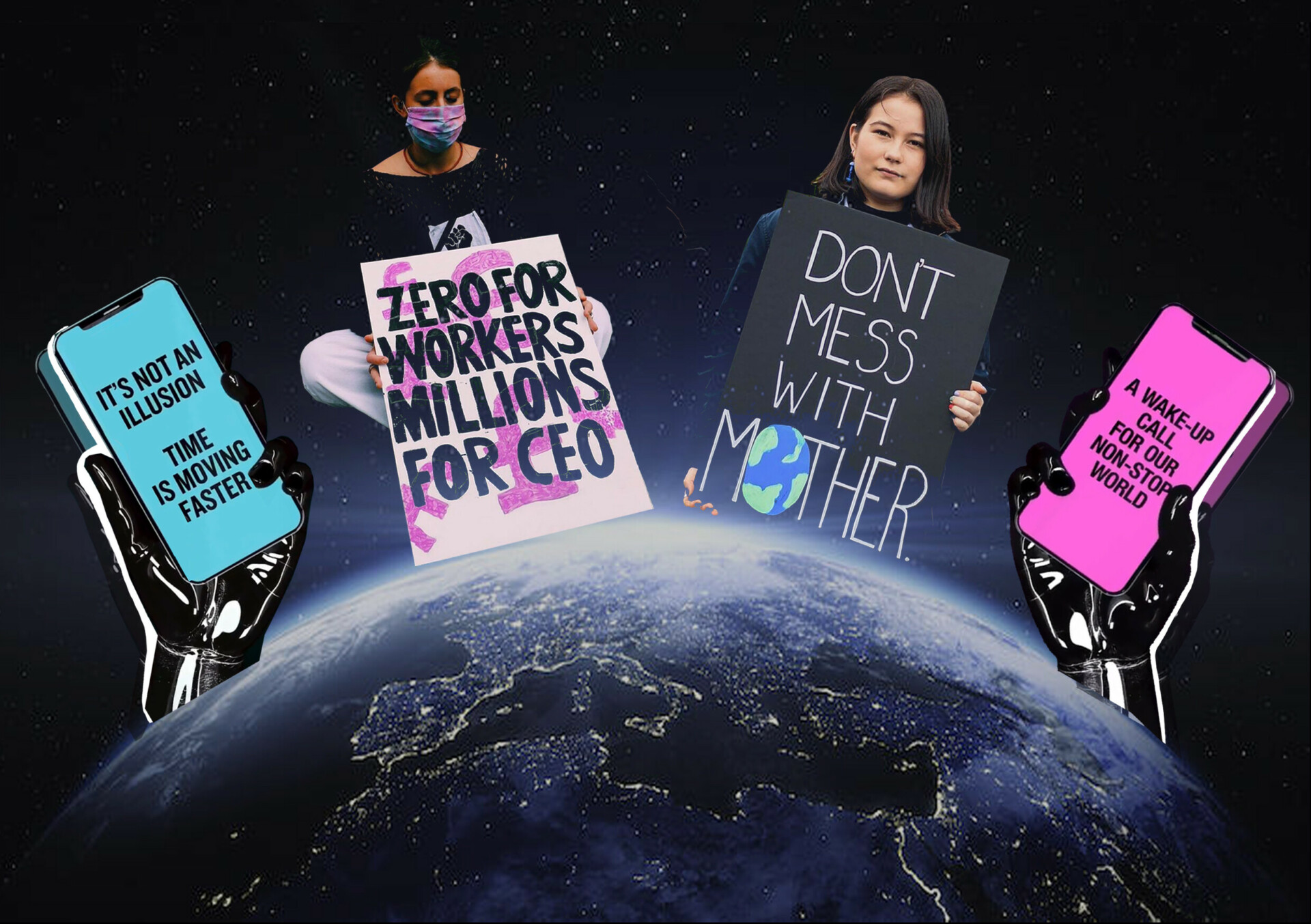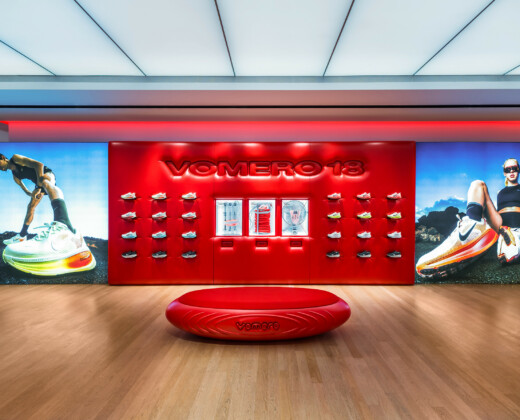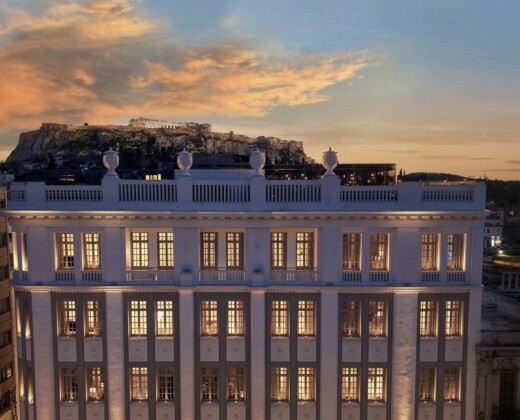Photo Credits: @trendatelierbygeraldinewharry
Like many industries during 2020, fashion was forced to form to the era of lockdowns. As
many of us have migrated to online shopping to keep us feeling some sense of normality
during national, and local lockdowns, COVID-19 has been the final push to fashion becoming
increasingly digital, a trend already on fashion’s horizon before the pandemic. With
Instagram adopting a shopping section on business pages, the rise of CGI models (e.g.
@lilmiquela) for designer campaigns, and online retailers such as PrettyLittleThing and
Missguided becoming global fashion forces to recognise, this year has only accelerated the
digital direction of fashion. With this being said, and 2020 having such a cataclysmic effect
globally on businesses, will fashion be changed forever? Or has 2020 become the year that
woke us up to the cataclysmic effect fashion has had on the planet?
We spoke to futurist, designer, educator and analyst Geraldine Wharry on how we are
already on borrowed time.
Can you explain to our readers what you do, and your job, in your own words?
“I’m a futurist, designer, and educator. Most of my practice at the moment centres around
being a fashion futurist. I evolved from being a fashion designer to then working with an
interest forecasting. I look at macro trends that impact five to ten years, looking at tech,
science, social-economics, behaviour and culture trying to look on the fringes of what’s going
on because generally, that’s what will indicate what might be mainstream later down the line. I
use a mixture of fact-finding and a lot of gathering of information; whether it’s academic or
from conferences, events or interviews, conversations, panels or also just secondary research
online. But I also obviously use my expert intuition making as well take to guide me.”
As many of us are well aware of the increasing damage, our fashion purchases have been
making towards the environment, with fashion approximating 22% of carbon emissions made
globally, over the past few years there has been a divide in consumers. Those of us acting
business as usual in our seasonal shopping habits, and those who have turned to thrift
shopping, DIY, and fashion app of the decade Depop.
We asked Geraldine on what’s the future of hyper-consumerism in fashion, as an industry so
heavily reliant on continual purchasing of good what needs to happen? And what is the
damage we have caused?
“It’s not clear whether excessive buying has taken over there are conflicting data on that
because some surveys show people slowing down, culling and focusing on what they need.
Other surveys show that in some areas their spending increased in shopping. [Generally, there
has been] decreasing consumption, obviously because a lot of people have lost their jobs or
been furloughed. In the future, it’s not clear what will happen in the UK. Still, other countries are starting to legislate the industry and taking it very seriously, so, for example, a ban on plastic bags, so in reality, the UK is quite behind.
There is a growth in consciousness and accountability on both the individual side and on the
government side, towards climate change as it starts to become more apparent to the naked
eye. But, right now, people are not taking it that seriously because they don’t necessarily see it
something obvious. The more apparent it is that is to our economies, and our security, the
more likely governments may step in.
More and more people are becoming aware of climate change, and some people are starting to
understand the link between what they are buying and climate change. However, one thing
that is important to understand is that climate change and fighting climate. It’s not about
purchasing an item that’s made from recycled materials, it’s about understanding that the only
reason you can afford these clothes is because they’ve been made by underpaid workers an
often connected with the slave labour. The UK specifically has a big problem on their hands
with these corrupt fast fashion brands that are money laundering.”
As fast-fashion has become such a pivotal part of this industry, making millions for brands
across a year by providing cheaper, quicker made and trend-based items, can fashion survive
consumers buying less, or boycotting an entire section of the industry? Can fashion adapt to
become sustainable? And how had COVID affected this?
[Ultimately, we need to] cut down on carbon emissions and stop a kind of runaway effect
where we’re very close to a tipping point. There’s a 9% chance that by the end of this century
we will be extinct because there’s already a massive wave of extinction. Whilst we are
continuing business as usual, according to hundreds if not thousands of scientists, we are living
on borrowed time. Every day hundreds of species are going extinct, and basically, the planet is
finally shutting down.
“The magnitude of this is so significant that even during COVID as entire industries slowed
down, traffic shutting etc., we only managed to achieve a 4% decrease in carbon emissions
when we had to reach a 12% to this year alone to start rebalancing things. Even a global shutdown with the pandemic wasn’t enough; we need to rethink the way we manufacture and produce entirely. It’s a top to bottom change that is huge and will cost the world a lot of money, but if we don’t do anything, it will be even higher.”
Anna Wintour finally admitted earlier this year that fashion needs to change for sustainability how sincere is this statement? And how genuine are brands about change?
“There is a lot of greenwashing going on, and the low hanging fruit for most people is to think
that because you bought something made from recycled and sustainable materials, but that’s
not true. What makes a garment sustainable is how the garment workers are paid and
transparency about the whole supply chain. Sustainable items are a good start, but it’s not
everything. If you have only one collection that’s made from recycled materials, for example,
Primark, ultimately, you’re not looking to revise your system and change the way you operate
entirely – it’s just greenwashing. While it’s great there are a lot of brands popping up in terms
of grassroots organisations emerging brands or some amazing young sustainable designers
popping up; ultimately I don’t think in the UK specifically enough is being done at all.”
In your opinion, has COVID changed the need for fast fashion?
“Personally, [concerning] the Coronavirus and lockdown, I’m not sure why people are still
shopping so much; maybe it’s for social media or form of retail therapy? I’m not sure.
People have migrated more towards loungewear and items that are more about you know
conducive to being at home. Diptyque candles, for example, searches went up 527% on
Liberty’s website during lockdown. It’s expected that people want to buy themselves new
things and feel excited; there’s nothing wrong about that. What we need is to start to
differentiate between needs and wants, as well as finding creative ways [to bring excitement]
into your wardrobe. Start looking more repairing and DIY and like finding exciting ways of restyling
your wardrobes to manufacture that feeling of newness without necessarily buying
something brand new, like Depop.”
As COVID woke up a lot of fashion retailers to their actual capacity to their e-commerce
sales, with many brands floundering to find the logistics behind moving their wasted stock in
stores to online sales, we wondered what’s the future of the high-street? As an already dying
concept before this year, will fashion outlets slowly move to become predominantly ecommerce?
“I’m not in the business of making hard predictions; I don’t think that’s a good way of being a
futurist, I believe the future is somewhat more fluid. Clearly, e-commerce is taking over, and it
was before lockdown. Lockdown has accelerated the trend of being online, and now people are going to think twice before going into more central areas to shop. On the other hand, I think being in a lockdown for months people are expressing that they miss being around other people and missing socialising or being able to be out in cafes.”
Fashion Week became a nightmare this year. As the pivotal event so crucial for brand image
and sales were pulled from beneath them, designers made a move to digital, holding online
shows and even exploring 3D design to model on a virtual catwalk. With the hope of a
vaccine on the horizon, and a return to normal by Spring 2021, will SS21 be digital? And how
has this drastic change affected such a long-standing tradition in fashion?
“[Corona has] stopped a whole community of people being able to come together for an event.
A lot of people think that things will [continue] to showcase digitally, there’s a real rush within
the student body to learn how to design in 3D and create avatars. [It’s a] really interesting new
space and that’s going to change the catalogue show system that was already honestly also
running on borrowed time. I mean financially [designers] need to showcase their collections,
but the whole system of catwalk shows was also incredibly polluting [and unsustainable]
Yet, it’s also a tough time for entire parts of the industry that relied on these shows and these
events which are now suffering. What’s so sad about the lack of events this year is the impact
on the editorial side of the industry, which is dying. There’s been no transition for the artists,
organisers and producers of that industry because of this very violent shift, its brutal for people
they are incredibly talented and skilled. What we need to think about now at this stage in the rebuilding process is the transition system, what do we do to transition to digital.”
You can find Geraldine on her website https://www.geraldinewharry.com/about-geraldinewharry
for more information on her work, courses and community.
Words By Geraldine Wharry, Graphics By Millie Pollok








